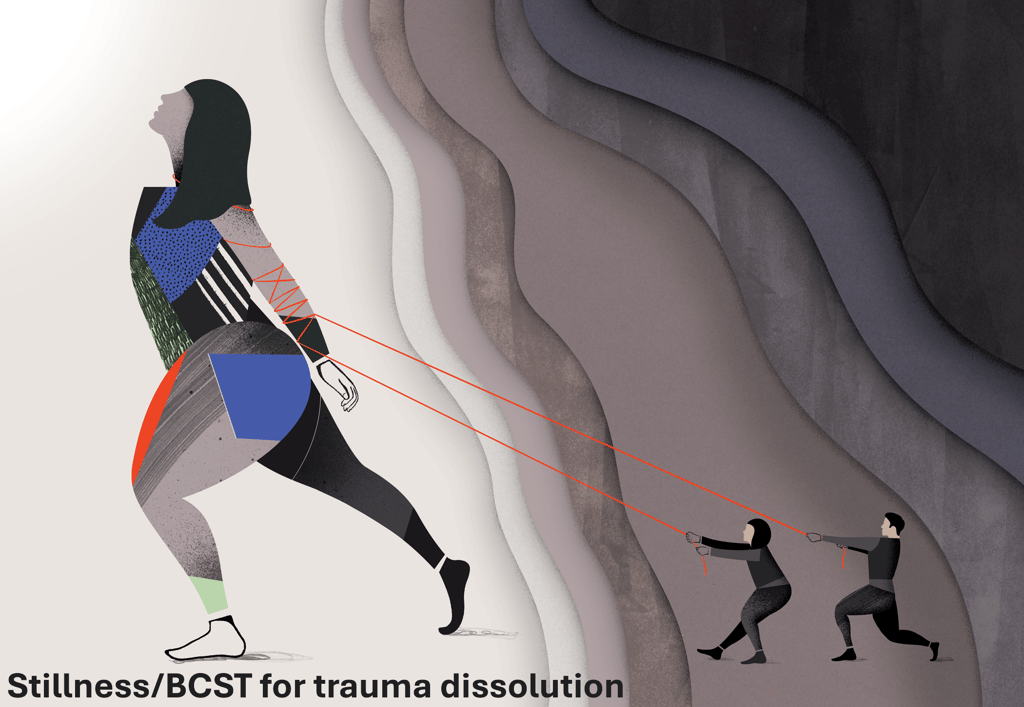The Science Behind Biodynamic Craniosacral Therapy (BCST) for Trauma Healing
Marian Apostol, RCST®, BCST
6/2/20252 min read


Trauma could be simply defined as life undigested material. It usually leaves lasting imprints on the body, often manifesting as chronic stress, tension, or even dissociation. Biodynamic Craniosacral Therapy (BCST) offers a gentle, non-invasive approach to help the body-mind system process and dissolve trauma, restoring a sense of balance. But what theories support its effectiveness? Let’s explore the science behind BCST and why it plays a powerful role in trauma healing.
1. Polyvagal Theory: Rewiring the Nervous System
Dr. Stephen Porges’ Polyvagal Theory is a cornerstone in understanding trauma recovery. This theory explains how the autonomic nervous system shifts between states of safety, fight-or-flight, and shutdown. Trauma often keeps individuals trapped in survival responses, making it difficult to feel safe or connected.
BCST works by supporting a regulated nervous system through gentle touch and presence. Practitioners attune to the body’s rhythms, encouraging a shift from sympathetic activation (fight-or-flight) to parasympathetic restoration. This process helps clients feel safe, grounded, and more connected to themselves and others.
2. Developmental Psychopathology Model: Unraveling Early Trauma
Early childhood experiences shape long-term physical and psychological health. The Developmental Psychopathology Model examines how adverse experiences impact the nervous system and emotional resilience. BCST acknowledges these early imprints and works to create a sense of safety at the deepest level.
Through light touch and presence, the therapy reorganizes stored patterns in the body, helping release trauma without reactivating distress. Clients experience shifts in emotional regulation, allowing the body to recalibrate towards greater ease and stability.
3. Biological and Cognitive Theories of Trauma: Restoring Balance
Neuroscientific research suggests that trauma alters brain function and body regulation. Hyperarousal, dissociation, and sensory dysregulation are common responses. BCST addresses these challenges by working directly with the body’s fluid system to promote balance and relaxation.
By listening to the body’s subtle rhythms, practitioners facilitate a self-corrective process that helps clients experience deep states of rest, allowing trauma to resolve naturally. This approach integrates both physiological and psychological healing, reinforcing the body's ability to adapt and restore equilibrium.
4. Relational Touch/Attachment Theory: The Power of Non-Invasive Healing
Touch plays a crucial role in emotional and physiological well-being. The Relational Touch Theory emphasizes the importance of safe, attuned contact in healing trauma. BCST practitioners use light, non-invasive touch, allowing the body to reorganize trauma patterns at its own pace.
This modality fosters trust and safety, providing an anchor for the body’s innate intelligence to restore balance. Unlike more invasive methods, BCST honors the body’s own timing, making it a profoundly supportive modality for trauma recovery.
Final Thoughts
Biodynamic Craniosacral Therapy is grounded in scientific and experiential wisdom, offering a unique path for trauma healing. By incorporating principles from Polyvagal Theory, developmental psychology, neuroscience, and relational touch, BCST supports the body in releasing stored trauma gently and effectively.
For those seeking a holistic and compassionate approach to trauma recovery, BCST provides a safe space to reconnect with the body's innate resilience. Whether recovering from emotional wounds, chronic stress, or deep-seated trauma, this therapy invites balance, peace, and renewal at every level.
